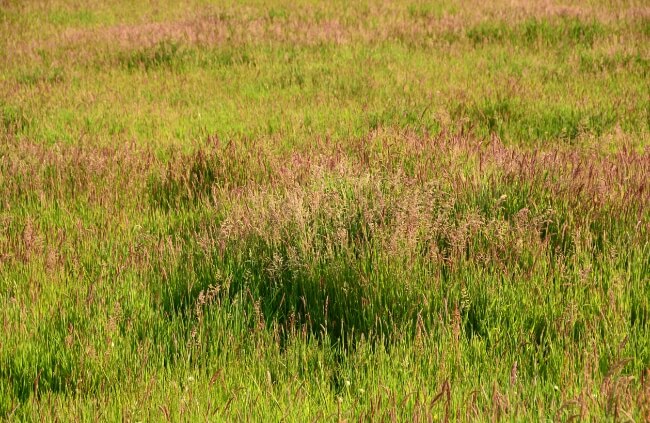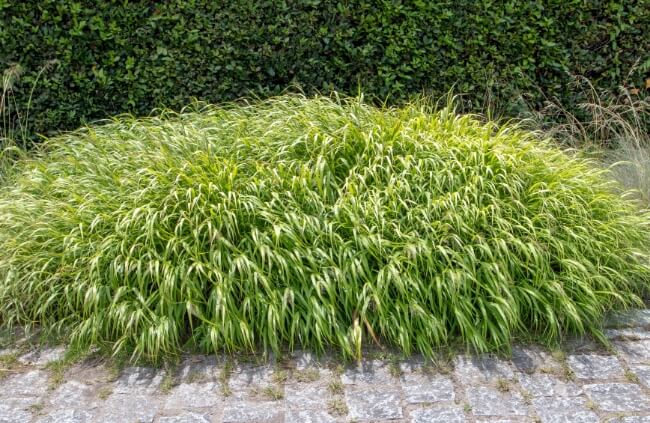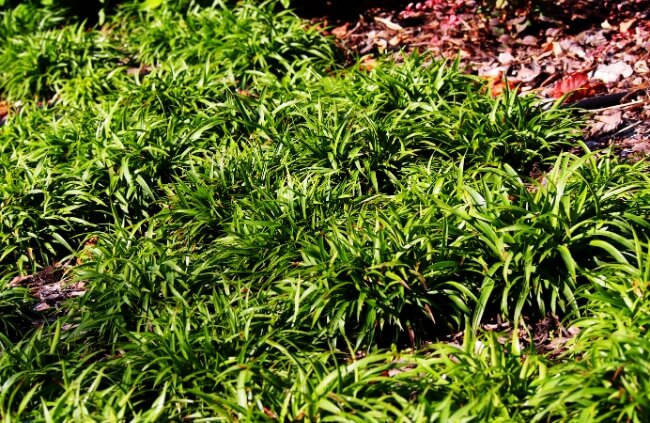Turf, otherwise called grass, traditionally requires plenty of light for optimal growing conditions like these types of turf. Many grass varieties do not grow well under the shade of a tree, house or any other structure, resulting in brown patches or wasted seeds.
While grass will not grow in full shade where it does not receive any light, some grass varieties are able to grow in shady locations that receive partial light, full light for only part of the day or filtered light through tree leaves.
Selecting the appropriate shade tolerant grass, soil and temperature conditions will result in a stunning lawn even beneath the shade of a tree.
More...
Best Grass for Shaded Areas in Australia
Red Fescue

Red fescue is a type of fine bladed grass. It is sometimes called creeping red fescue. It is a shade tolerant grass and used primarily in moderate shade conditions, such as beneath a tree. The colour is a deep green that makes the grass look lush.
The best soil conditions for red fescue are well-draining soils or infertile soil from drought. The grass does not tolerate wet soil and does not need much fertilisation to thrive. The grass is moderately cold tolerant.
Hakone Grass

Hakone grass, which is sometimes called aurela, is a tall grass that grows in shade and grows up to approximately 61 cm if left unattended. The grass is a clumping type that grows in a mound and bends downward in an effect similar to weeping willows.
It grows well in light to moderate shade conditions such as under a tree where it receives filtered light throughout the day. The best soil conditions for the grass are moist, well-draining and fertile. It does not grow well in wet clay or infertile soil. The grass is moderately cold tolerant.
Krajina

Krajina, which is sometimes called hard fescue, is a type of fine bladed grass that has a medium-tall height if allowed to grow without mowing, though usually it is mowed to about 7.6 cm.
The grass is moderately shade tolerant and does well in partial shade or filtered shade conditions. Krajina does best in soil that is well-draining and has low fertility. It will not tolerate moist or wet soil and does poorly in fertile soil.
Chewings Fescue
Chewings fescue is a type of clumping fine bladed grass. It grows in small, upright clumps. The grass has a high shade tolerance, so it is ideal for lawns with little light throughout the day. The grass is aggressive so many other types of grasses or flowers are better planted away from the fescue.
Chewings fescue does best in sandy soil conditions with low fertility and is tolerant of cold weather. It is also mown lower than other grasses. Mowing to 3.8 cm is appropriate for the grass, even in areas with shade.
Woodrush

Woodrush, which is also called luzula, is a type of clumping evergreen grass. It does best in shady conditions including moderate to almost full shade. The height grows around 15.2 cm to 30.5 cm if it is not mowed.
The best soil conditions for woodrush are moist and fertile with acidic pH levels. The plant tolerates cold weather well.
Saint Augustine Grass

Saint Augustine grass is native to tropical locations and ideal for warm climates. It tolerates light to moderate shade conditions, though it does not grow well in full shade. The grass does not do well in cold weather conditions because it is a tropical grass.


Get Your Free Guide:
Master Growing Australian Natives eBook
A Must Have Complete Guide for Every Australian Garden
Get Your Free Guide:
Master Growing Australian Natives eBook
A Must Have Complete Guide for Every Australian Garden
The grass does best in well-draining, but moist soil conditions. It is not drought resistant, so the grass requires watering during times with little rainfall.
Centipede Grass
Centipede grass is a type of creeping grass. It is a warm climate grass, though it tolerates cool weather conditions for short periods of time. Cold weather kills the grass. While the grass thrives in full sun, it will tolerate moderate shade throughout the day. The best soil conditions for the plant are sandy, acidic and infertile.
Published on June 6, 2023 by Nathan Schwartz
Last Updated on September 20, 2025




